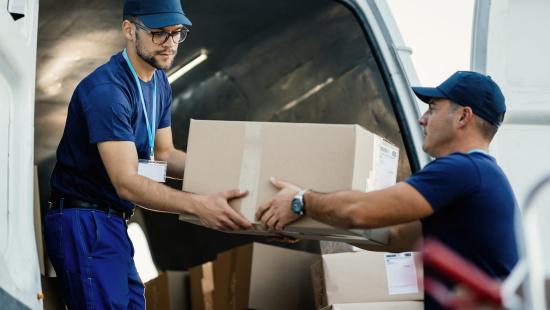Welcome to the Customer Facing Supply Chain
It’s amazing how many companies are turning to their supply chain for competitive differentiation. You know that this is true when you start seeing commercials and sales pitches promoting supply chain capabilities. However, the difference we’re now experiencing is that companies are exposing their supply chains directly to their customers with capabilities that are intended to benefit the customer as opposed to just themselves.
What makes this strategy more interesting is that the customer and company benefit at the same time. Welcome to the age of the customer-facing supply chain.
The notion of the customer-facing supply chain occurred to me when I had a chance to see what two customers of Descartes, Woolworths and US LBM, are doing with mobile apps used by their customers that are powered by their supply chain systems. In both cases, their supply chain and supply chain technology have become part of the “front office” helping them make their selling proposition more compelling and sticky.
Woolworths, the Australian retail powerhouse, has a 30 second commercial that sums up their entire proposition for online grocery and home delivery. In this commercial, they do a phenomenally simple job of demonstrating how easy and seamlessly it is to order and get groceries delivered.
Behind the scenes from a delivery perspective, delivery appointment booking and real-time delivery tracking are all part of the customer-facing apps. What’s interesting is how they engage the customer post-ordering. When customers book an order they have 3-hour delivery slots, but when the orders are to be delivered, the slot narrows to 30 minutes and the customer is notified of the tighter time window.
In addition, they have a simple real-time “ETA” button that the customers can use to determine exactly when their delivery will arrive. When you evaluate their results, there is an interesting mix that says they have dramatically improved their customer satisfaction.
Online revenue is up over 50%, yet the number of customer calls to the call center had been cut in half! Their customers no longer wonder where their deliveries are.
US LBM is the 13th largest building products distributor in the US. This video shows how they are benefiting their customers and themselves (full disclosure: US LBM and Descartes created this for an award submission).
US LBM built an application to improve contractor productivity that is tightly tied to their real-time supply chain systems. If you didn’t know it, construction is a highly dynamic business with most of the ordering and delivery happening in less than 24 hours.
The challenge for US LBM’s contractor customers is that they are always on the go and need to know exactly when their material is arriving to efficiently schedule their crews. The benefits of improved visibility to the contractors are obvious, but equally US LBM benefitted from it as well with a 35% improvement in on-time delivery for many of their locations, while cutting costs by over 10% and turning around trucks 30% faster.
INDUSTRY WHITE PAPER
Home and Last Mile Delivery Best Practices
This eBook explains how to transform your home/last mile delivery performance — it all starts with a different perspective and vision to turn delivery into a competitive weapon.
So what do these two companies have in common? Yes, they have operational excellence. More importantly, they have moved from an internal to a customer facing supply chains focus, providing the customers with the supply chain information they need to make their lives or jobs better.
Both companies took some risk to expose the supply chain processes and information directly to the customer. If they are not performing well and don’t have the right data at the right time, the customers know it instantly. However, the results are compelling.
While the opportunity to use the supply chain as a competitive weapon is big, the implications for the kinds of supply chain technologies required are as well. Several times, I mentioned the need for information to be delivered in real-time, and that the information itself has to be created in real-time.
Yet, it’s amazing to see how many supply chains try to operate in real-time, but their systems cannot. The best people and process alone will not get the job done when you need to share actionable information with your customers.
The technology measuring stick is very simple. If your supply chain systems are still living in a “batch” world and don’t include real-time GPS updates, then it’s likely that instead of being enablers, your technology is an inhibitor to achieving the customer facing supply chain.
Making your supply chain part of the “front office” can unlock value for your customer and your own company. However, the greatest challenge to getting there may come from your existing supply chain systems’ capabilities.
Has your company created a customer-facing supply chain? If you want to speak to a domain expert, contact us today.
Fleet Resource Center
Expand Your Routing, Mobile & Telematics Knowledge
Recommended For You




